Why Are the Elderly Forgotten When It Comes to Corporate Responsibility?


Every so often, we see a government report or television exposé about the tragedy of elder care and the plight of many senior citizens in the U.S. Such news will come with brief tut-tutting, then will be quickly forgotten thanks to our 24/7 news and social media cycle. But we continue to ignore the stubborn facts about our nation's evolving demographics.
When President Lyndon B. Johnson signed the Medicare Act into law in 1965, only one in 11 Americans were over the age of 65. The population of Americans 65 and older will double its estimated number of 84 million by 2050, according to the U.S. Census Bureau, and by 2060, senior citizens will comprise 20 percent of the country’s population.
Despite this trend, we as a country are still youth-obsessed. Rather than focus on the wisdom and perspective that our older population offers, most of us pour our energy into fighting age rather than accepting it. When many of the supposed “cutting edge” media companies discuss getting older, it is usually about tactics to fight aging — instead of welcoming it as part of the cycle of life.
This obsession with youth is ingrained throughout all of our institutions, especially in our business community and NGOs. Companies and nonprofits are stepping over each other to show what they are doing to help kids and students as they extol the virtues of the millennial generation.
And indeed, millennials will remind us about everything they have endured. Of course, every generation has its pain: millennials will point out how they lived through two wars the U.S. instigated overseas, the fiscal crises dating back to 2008, and the risks coming from climate change.
But let me remind you of what the eldest generation today has endured: The oldest ones grew up during the Great Depression and suffered through the privations and loss of life during World War II, soon to be followed by the violence of the Korean War; they faced the prospect of nuclear war and communism, the latter of which inspired many to flee to the U.S.; and then they lived through the 1960s, arguably the most turbulent time in recent history.
Our younger senior citizens fought, or were affected by, the war in Vietnam. They then endured the inflationary days of the 1970s and the deindustrialization and decline of trade unions during the 1980s, when a middle-class life paid for by a blue-collar job ceased to be possible. Those who were women often were relegated to jobs far beneath their talents. Many who were not white remember a time when they could not vote or own property in certain areas of town. Elders who were gay generally lived a life in the closet, only to see their communities ravaged and friends disappear during the AIDS epidemic of the 1980s.
But at a time when thought leaders in the sustainability and corporate responsibility space love to talk about “inclusion” and “diversity,” those words apparently do not apply to those whose first electronic device was a black-and-white television. And our senior citizens are largely excluded from these conversations — in part because many are not on the social media channels, but also because many are sequestered in terrible facilities where, if we do not confront the growing problems of elder care as a society, many of us will live out our final days, too.
The movement toward creating a society that, at a minimum, includes our senior citizens and at most celebrates what they have to offer must include two fronts. First, we must inspire all of our institutions to take responsibility in looking out for our elder population -- not just our youth. Second, we have to start holding the companies that have been entrusted with our elder family members -- and are making billions of dollars off taxpayers in the process -- more accountable.
The exclusion of our senior citizens from our daily life hit me even more over the past few months as I watched my aunt’s health decline, from hospitalization to a rehab center to a memory care facility, only back to hospitalization and soon hospice. Unlike many elders, my aunt was fortunate: My uncle had the means to have her cared for by one of the best assisted living facilities here in Fresno, California. She also had a loving family and network of friends who visited her frequently, and in fact, her days were full as many of us visited her almost daily. Unfortunately, during her stay in memory care, no matter what time of day, my aunt’s family and friends were often the only visitors present. The staff where my aunt stayed was dedicated and treated my aunt and her peers with the upmost respect and dignity, but a five-star staff does not replace the presence of loved ones.
And so when the business community talks about community and the future, it is also important to remember those who, in general, we are too quick to dismiss as part of the past. While everyone is chasing millennials because they are perceived to be the most influential demographic, the size of our senior citizen population is one that is too large to ignore for both economic and moral reasons.
Yes, businesses should not be dissuaded from working with youth, and such programs fill a wide gap. But while corporate volunteering programs are a great way for engaging youth, our elders deserve attention, too. Whether it’s delivering meals, playing games, improving health or, quite frankly, just being there and listening to one’s stories from long ago — or hearing out ideas for what needs to happen today — it is time for companies, and society at large, to step up and expand what is too narrow of a definition of diversity.
Although we should encourage all organizations to consider senior citizens as part of the community, we also need to hold companies that are making billions of dollars from senior care accountable. While the health care industry prefers the monikers of “rehab centers” or “skilled nursing” facilities, just walking into many of these places makes one realize that they are often not anything resembling such descriptions.
Take the example of Genesis Healthcare, a Pennsylvania-based company that last year generated $4.75 billion in revenues. Like many of its peer companies, Genesis has been built on the funds -- as in, Medicare disbursements -- that it extracts from taxpayers. Its CEO, George V. Hager, Jr., earned compensation of almost $900,000 from what I'd call “Medicare mills” at best that the company operates across the country. Genesis’s board of directors allowed Hager to pocket his salary on the backs of the elderly (and physically disabled) who have stayed, or now live, at the company’s elder care facilities across the country.
Mercifully, my aunt, who spent three weeks at one of Genesis’s rehab centers in Clovis, California, was not subjected to what often becomes a life sentence at one of these decrepit facilities. Food not fit for human consumption; an untrained and disengaged staff who at best was disrespectful and at worst would yell at patients; decayed interiors made even worse by the lack of cleanliness; and doctors who prefer to over-medicate instead of delivering real solutions for health problems are among the daily indignities elder Americans have to suffer on a daily basis during the sunset of their lives. And again, many of these facilities lack visitors — and of course do not encourage any kind of programs to engage the community, because if they did, they would have to be held accountable for the conditions in which their patients live.
And while these corporations present a lofty impression of the services they offer, they give nothing back to the community despite the billions in taxpayer dollars from which their executives benefit. And in fairness, it is not just the elderly who suffer: Many of the nursing assistants who have to do the most difficult work make little more than minimum wage. Of course, a caring environment makes the difference: The staff at my aunt’s memory care facility were incredibly compassionate, as were the workers at the local hospice center. As in any sector, a healthy work environment and effective management make all the difference. But in the case of elder care, a discouraged workforce can result in suffering for one of the most vulnerable populations in our society. So, it is no wonder these companies offer nothing when it comes to corporate responsibility: they would then become exposed for the horrific care to which far too many senior citizens are subjected.
At a time when companies are trying to find innovative ways to engage the community and bolster stakeholder engagement, if they truly want to be innovative, they can find ways to enhance the lives of our older citizens, and encourage their employees to devote their time and resources to our elders. After all, they have lived through so much, and in my view, deserve much more from society than how society currently treats them.
Image credits: Leon Kaye
What Peabody's Bankruptcy Reveals About the Coal Industry
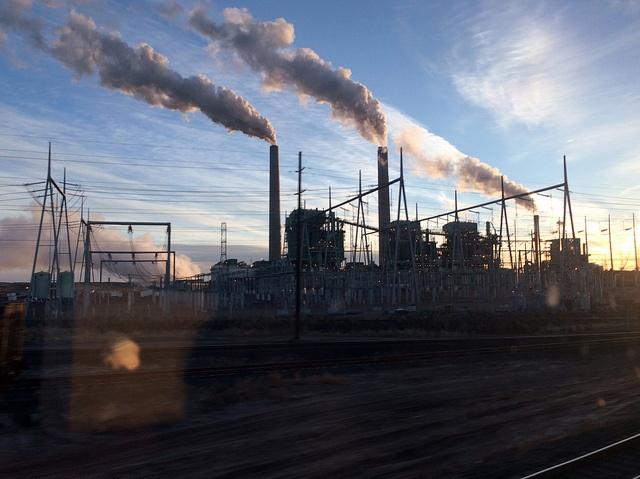

What do you get when you combine a significant drop in coal prices, overproduction of domestic shale gas, a weakening Chinese economy and regulatory challenges? For coal giant Peabody Energy these intersecting challenges lead straight to Chapter 11 bankruptcy.
Peabody Energy filed on April 13 for the majority of its U.S. entities in the U.S. Bankruptcy Court for the Eastern District of Missouri. Peabody’s intentions in filing for Chapter 11 status are to “reduce its overall debt level, lower fixed charges, improve operating cash flow and position the company for long-term success, while continuing to operate under the protection of the court process," the company said in a statement.
“Through today’s action, we will seek an in-court solution to Peabody’s substantial debt burden amid a historically challenged industry backdrop,” Glenn Kellow, Peabody CEO and president, said last week.
Bloomberg described the filing as the “most powerful convulsion yet in an industry that’s still waiting for the coal market to bottom out.” The publication also said Peabody’s is the “biggest U.S. corporate bankruptcy this year by liabilities.”
Simply put, Peabody's troubles speak to the coal sector’s “structural decline since 2013,” as the climate change awareness organization 350.org stated. And Peabody isn’t the only coal company to declare bankruptcy. It's actually the 50th since 2012. In the last few months, Alpha Natural Resources and Arch Coal both filed for bankruptcy.
“Peabody Energy’s bankruptcy is a harbinger of the end of the fossil fuel era,” said Jenny Marienau, U.S. divestment campaign manager for 350.org.“Peabody is crashing because the company was unwilling to change with the times — they doubled down on the dirtiest of all fossil fuels, and investors backed their bet, as the world shifted toward renewable energy. They have consistently put profit over people, and now their profits have plummeted. Our world has no place for companies like Peabody.”
Back in November, New York Attorney General Eric T. Schneiderman's office determined the statements Peabody gave to the public and investors about climate change risks violated state laws that prohibit false and misleading conduct. As a result of the findings, Peabody is now required to revise its shareholder disclosures on climate change risks with the Securities and Exchange Commission (SEC).
Some of the findings of Schneiderman’s investigation shows what regulatory action could cost the company. Peabody internally projected that, if certain aggressive regulatory action on existing power plants and future electricity generation in the U.S. were to be implemented, it would reduce the dollar value of coal sales in the company’s primary U.S. markets by 33 percent or more. Enacting a $20 per ton carbon tax would reduce the demand for coal as a fuel source in U.S. power generation by 38 to 53 percent in 2020 compared to 2013 levels, a consulting firm hired by Peabody found.
Big banks and coal financing
Big banks finance the coal industry, as a report released before the Paris climate talks in December revealed. The joint report by Rainforest Action Network, BankTrack and Friends of the Earth France looked at coal finance commitments from 15 of the world’s biggest private-sector banks in France, Germany, Switzerland, the United Kingdom and the United States from 2009 to 2014. What they found is that the biggest banks in the U.S. and Europe “are also the world’s biggest coal banks.”
Coal is the largest source of human-induced greenhouse gas emissions from fuel combustion, and it accounts for 44 percent of global energy-related climate emissions. That makes the financing of coal by banks, given the stated commitments they have made to address climate change, something that needs to be addressed.
Big banks have supported coal with over $257 billion between the Copenhagen and Paris climate talks, according to the report. During that time period, the world’s biggest banks only put 40 percent ($104.59 billion) as much financing into the renewable energy sector. The top five coal-financing banks since the Copenhagen talks in 2009 are:
- Citigroup ($19.65 billion)
- JPMorgan Chase ($18.80 billion)
- Royal Bank of Scotland ($15.86 billion)
- BNP Paribas ($14.84 billion)
- Bank of America ($14.44 billion)
Some banks are responding to pressure from the global climate movement and have announced new coal financing policies. They include Bank of America, Credit Agricole, Natixis, Citigroup, Goldman Sachs, Société Générale, BNP Paribas, Morgan Stanley and Wells Fargo.
The Rainforest Action Network sees the Peabody filing as being a test of banks’ coal commitments. “We see Peabody's bankruptcy process as a critical test of the coal financing commitments at multiple banks,” Ben Collins, senior campaigner at RAN, told TriplePundit.
Banks that have made commitments to transition away from coal financing are generally taking a “gradual approach,” Collins said. “We are concerned about this gradual approach given the urgent need to transition away from coal and other fossil fuels, following the Paris conference,” he added.
Image credit: Flickr/Craig Dietrich
The Knowledge Revolution: Big Data and Sustainability
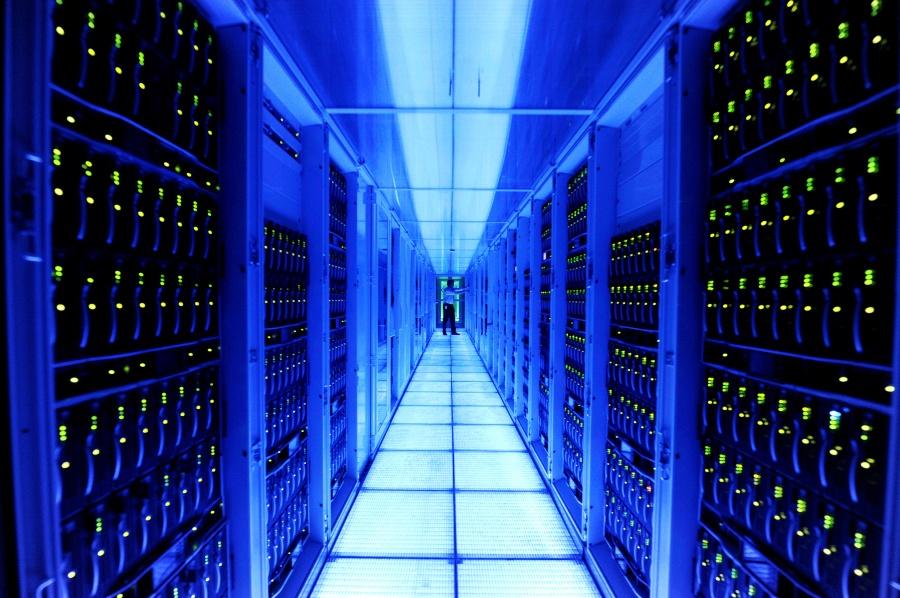

By Daniel Schmid
Sustainability poses many questions. For a long time, answers were scarce. But thanks to new analysis methods and an increasing willingness to share data, solutions that were completely inconceivable until recently are now becoming possible: For instance, big data allows us to optimize cancer treatment or to identify slave labor in the supply chain.
Fighting poverty, providing educational justice and healthcare, taking responsibility for resources, energy efficiency, occupational safety, consumer protection ... Countries, organizations and companies that are committed to creating a more sustainable world have a long laundry list. Yet as different as these areas seem to be, they all have one thing in common: their immense complexity. Unimaginably large amounts of data are generated in each of these areas, day in and day out. People who try to understand how these factors are developing and where they are going end up merely chasing the past – if they rely on conventional methods.
It takes big data analytics – the multidimensional analysis of mass data in real time – to give the persons responsible the information they need to make sustainable decisions reliably.
Test case: Tumor research
The advances big data has already made can be illustrated through the following example from cancer research. More and more oncologists are becoming convinced that tumor patients require personalized treatments. To better estimate the different effects of the tumors, they examine the DNA of cancer cells. You can think of it as a puzzle with 3 billion base pairs. Until recently, this task took a good 30 days to complete. Together with Mitsui Knowledge Industry, a Japanese IT specialist, SAP has now developed a solution that delivers genome analyses in 20 minutes.
The National Center for Tumor Diseases (NCT) in Heidelberg, Germany, is taking advantage of this technological leap. It began offering its patients DNA analysis of their cancer cells in 2015. In the next step, the NCT researchers compare their results with findings from other tumor treatments. The objective is to identify similar diagnoses and to develop a therapy that is the best fit for their patients (video). While still part of clinical trials right now, it will become a standard care service covered by health insurance in the future.
This example from tumor research impressively demonstrates the core benefit of big data: When complex data from a wide variety of sources is combined and analyzed in real time, completely new insights become possible. They are completely new because conventional methods were not even remotely capable of finding a comparable number of correlations in a cohesive calculation model, which can then be analyzed specifically in a reasonable amount of time.
Made in a free world
Similarly exciting developments take place whenever players who usually work in different domains come together. When companies and NGOs pull together, for example, big data can open up untold possibilities. Often enough, it can even find answers to issues that long seemed unsolvable – for example, finding effective measures against modern forms of slavery such as forced labor and child labor.
After all, despite its banning by the U.N. in 1948, slavery is still among the most serious violations of human rights worldwide. According to estimates, 20 million to 30 million people worldwide are in forced labor, with no rights at all, generating revenues for their captors of up to $150 billion per year. Stories of such exploitation regularly raise awareness among the global public – for example, through news reports on the mining of conflict minerals in the Congo or the situation of migrant labor in some emerging economies. But in most cases, the slave trade and its associated exploitation go largely unnoticed. Global supply chains seem too broad and deep to identify slave-like working conditions.
A broad alliance of activists, consumers and companies has had enough of this lack of transparency: The non-profit organization Made in a Free World (MIAFW) systematically identifies goods, services and raw materials whose production is demonstrably associated with slave labor. The organization's list now covers 54,000 commercial goods. Anyone can use the online database to examine their own buying patterns. Consumers can do so with just a few clicks. Of course, this task is more complex for the procurement departments at larger companies. That's why MFIAW offers a whole range of IT tools to automate the data synchronization as much as possible.
The organization cooperates with partners such as the Ariba trading network, an SAP company, whose customers include three-quarters of the 2,000 largest transnational corporations. Together, these companies spend $12 trillion annually on goods and services, making it an excellent lever for starving suppliers that violate fundamental human rights. In mid-2015, Ariba began offering its business customers the possibility of synchronizing their procurement data with information from Made in a Free World.
Sharing data
As these novel opportunities for generating knowledge become available, collaboration is intensifying at a number of levels. The pinnacle to date was reached in September 2015, when a network was founded by 70 governments, companies, NGOs and international organizations – including the World Bank and the OECD.
The name of the network – Global Partnership for Sustainable Development Data (GPSDD) – describes its purpose: The participants intend to merge their datasets and use them to serve the 17 Sustainable Development Goals (SDGs) defined by the United Nations last September. The network's goal is to provide free access to a maximum of reliable information to all interested parties. They hope to make this vision reality by 2030.
To illustrate how IT may support to attain the SDGs, SAP has created a new Web book. For every of the 17 goals, SAP’s sustainability experts provide a blog post with examples as well as info charts, using data from the world bank, among others. Short videos complete the offer.
Image credit: SAP SE
Daniel Schmid started his career in 1992 as a consultant at Kiefer & Veittinger, a CRM company that was acquired by SAP in 1997. In 1996, he became Business Unit Manager, followed by numerous management roles at SAP. From 2004, Schmid held various senior management positions within SAP Consulting across Europe, the Middle East and Africa. From 2009, Schmid headed up Sustainability Operations. In June 2014 he assumed the role as Chief Sustainability Officer and is globally responsible for sustainability at SAP. He is a member of the steering committee of econsense, a forum for sustainable development of German business. Schmid holds a degree in industrial engineering from the University of Kaiserslautern, Germany.
Daniel and his team share SAP's experience in a free openSAP online course "Sustainability through Digital Transformation", starting April 13, 2016.
GM Adds Recycled Water Bottles to Its List of Raw Materials
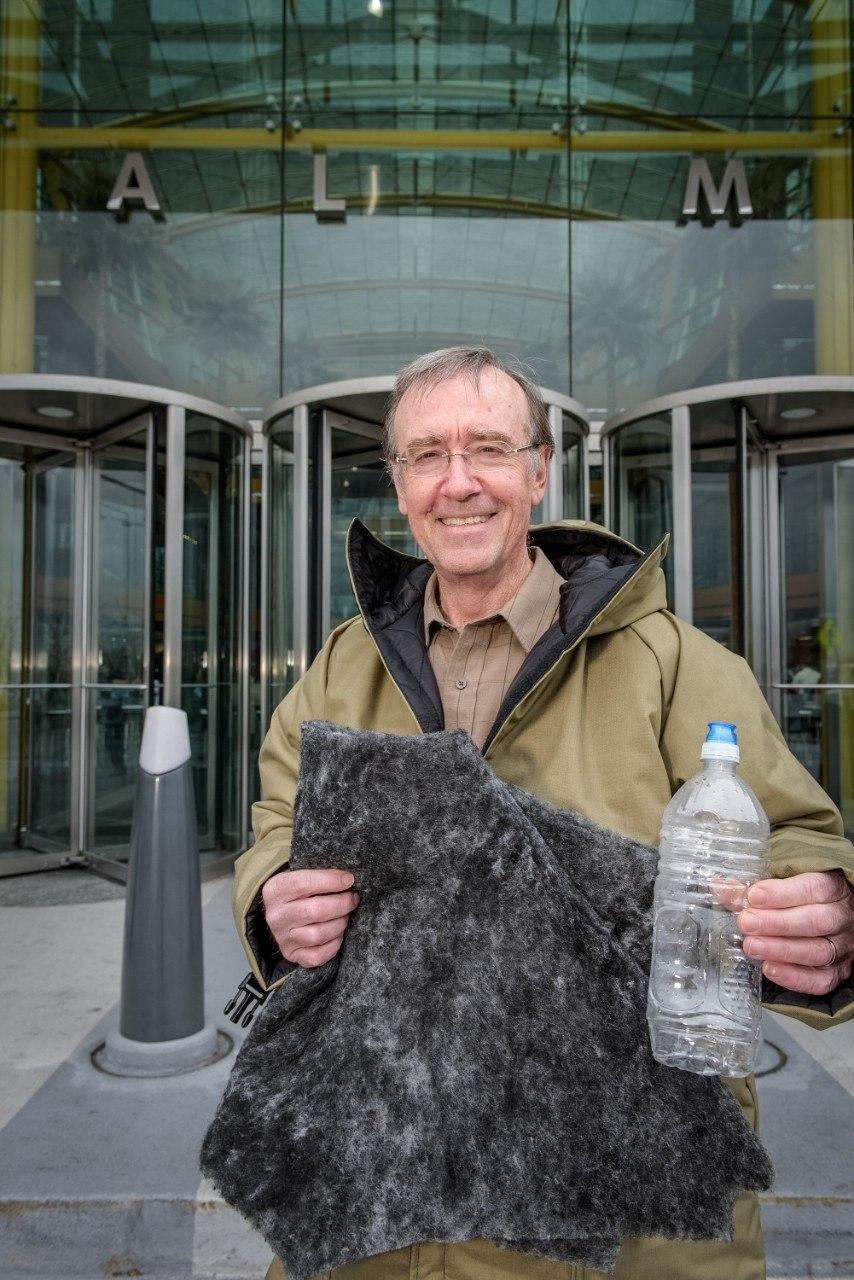

John Bradburn has a truly interesting job. As global waste reduction manager, he is GM’s equivalent to a professional hunter-gatherer -- roaming the forest and harvesting discarded materials to be utilized for useful purposes.
Having done this for a while, he’s gotten pretty good at it. Whether it’s turning oil-soaked booms from the Gulf oil spill into air baffles for the Chevy Volt, or transforming battery covers into wooden duck houses. It’s the reason why Bradburn received the White House Volunteer Service Award in 2015.
Last time we spoke, he had figured out a way turn cardboard shipping materials from various General Motors factories into sound-dampening headliners in the Buick Lacrosse and Verano models. He was also using plastic caps and shipping aids from GM's Fort Wayne, Indiana, plant in radiator shrouds for the Chevy Silverado and GMC Sierra pickups built there. He couldn’t see any reason why test tires at the Milford, Michigan, proving grounds couldn’t be shredded and used in the manufacturing of air and water baffles for a variety of vehicle models either.
Not one to rest on his laurels, Bradburn has now begun collecting used water bottles from employees at five GM locations and turning them into air-filtration elements to protect workers, sound-proofing for vehicles, and insulation to make outerwear for the homeless.
“Recycling is good, but viewing waste as a valuable resource that can be plugged into your operations or products is even better,” Bradburn told us. “It’s about rethinking the process and finding more sustainable ways to manufacture products and contribute to our communities.”
GM works with a network of partners in this effort, with each partner providing specific capabilities. Hamtramck Recycling bails the plastic bottles collected from GM’s world headquarters at the Renaissance Center in Detroit, as well as its Warren Technical Center, Orion Assembly, Flint Tool and Die, and Flint Engine plants. Clean Tech, Inc. washes the bottles and converts them to flake. Unifi, Inc. recycles the bottle flake into resin. Palmetto Synthetics processes the resin to create fibers, and William T. Burnett & Co. processes the fibers into various forms of fleece, serving all three applications.
- Rogers Foam Corp. die cuts the fleece and EXO-s attaches it into the nylon cover for the Chevrolet Equinox V6 engine. The part helps further dampen engine noise to deliver a quiet ride.
- Filtration Services Group works with New Life Center, a nonprofit jobs development and training mission in Flint, Michigan, to make the panels for the air-filtration fleece, which is then sent to 10 GM facilities.
- The coat insulation is sent to Carhartt, a workwear company established in Detroit in 1889, which cuts it to size for the Empowerment Plan. The program provides enough material to insulate 6,500 coats.
GM also is working with various organizations such as Schupan Recycling in Flint to collect additional water bottles to plug into the project. The car maker now has 131 landfill-free facilities around the world, a number that has steadily grown. The company recycles the equivalent of 38 million garbage bags of byproducts each year.
Image credit: General Motors
USAID: Renewables Are a Way to End Poverty in India
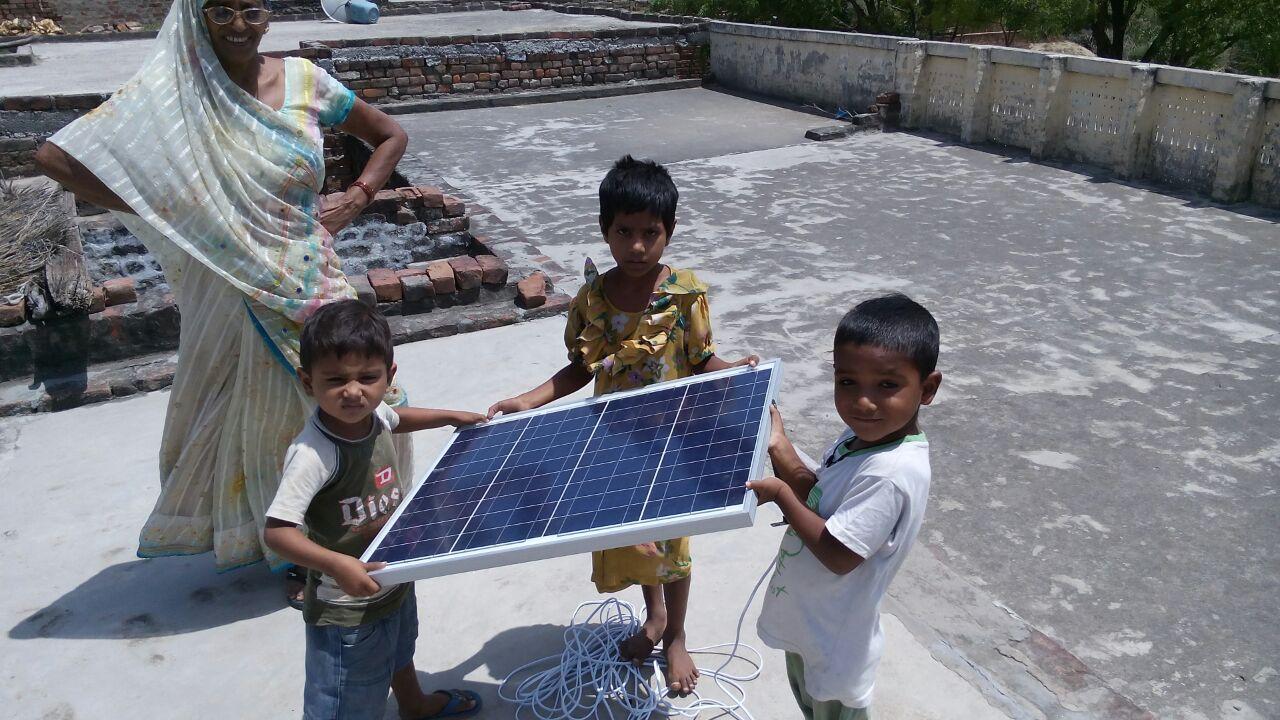

The past decade has not been a particularly kind one for USAID. The U.S. federal agency, which is trusted with an annual budget of about $35 billion to administer civilian aid worldwide, has attracted its fair share of criticism for what many see as squandered opportunities overseas. Its 3,500-plus employees do not have much to show for years of work in Egypt; it has been attacked for being tone-deaf and having a total lack of oversight in Afghanistan and Haiti; yet in other countries, such as Bosnia, USAID has won some begrudging respect.
But as foreign aid shifts from a check-writing ritual to a more social enterprise oriented model, USAID is trying a different approach worldwide, including in India. Last week the agency awarded $5 million in grants through its Development Innovation Ventures Program. Two of these awardees are piggybacking on other efforts to expand energy access throughout India by investing in clean-energy technology startups.
One company is Simpa Networks, which is striving to become a leader in “pay-as-you-go” solar power in India. Located in Noida, a planned city in India’s largest state, Uttar Pradesh, Simpa works with families to replace dirty and dangerous kerosene, or unaffordable grid power, with solar systems that not only provide light, but also offer a chance to upgrade their lifestyle.
These systems come with three lights, mobile chargers, a fan and the capacity to provide enough electricity to run a television. According to Simpa, its pay-as-you-go model leads to ownership after 24 to 36 months. Once the contract is paid off, the system will operate continuously and will last up to 10 years with some basic maintenance.
Depending on financing, Simpa’s system costs anywhere from 180 to 950 rupees ($2.70 to $14.25) a month. Access to the grid, if that is even an option, costs about 250 rupees ($3.75) a month. After two or three years, Simpa’s system is basically free.
Besides offering low-cost power, Simpa is also providing new economic opportunities. In an emailed statement to TriplePundit, the company says it employs almost 300 people full-time, and also works with approximately 500 technicians and “solar entrepreneurs.”
The workday in India for most people, of all economic classes, is one that often winds from early in the morning to late at night, but Simpa provides a work-life balance that is almost unheard of in the country. As one technician explained by email to TriplePundit:
“Before I came to Simpa I had worked in the many companies and was living away from my family. Simpa is a much more employee-friendly, social company, which I haven’t found in any other companies where I had worked. I am from a small village of Pilibhit where I used to work everything for my own people. In my family, I live with my mother, wife and my baby boy. Simpa gave me the opportunity to [fulfill] the responsibilities by adding me into organization, where I can manage my work and my family responsibilities by living in Pilibhit itself, which is very important for me.”
Another USAID grand recipient is Orb Energy, a Bangalore-based firm that has over 100 branches across India. The company’s target market is small- and medium-sized enterprises (SMEs), and it has installed rooftop photovoltaic and solar water heating systems atop both businesses and homes.
As solar has achieved cost parity, or even dipped in price below that of conventional grid electricity, Orb Energy has seen business opportunities surge. The company’s CEO said funding from USAID grants will be used to help finance larger solar power systems for SMEs across the country. So far, Orb Energy employs 400 people, with another 100 working at franchised locations throughout India.
Watch for more entrepreneurs to enter India’s still largely-untapped solar market. Just as cell phones opened up horizons for Eastern Europeans a generation ago as they leapfrogged landlines and went directly to wireless, opportunities are plentiful in India as almost a quarter of its people still lack access to grid electricity.
So, why is USAID involved when the private sector is already active on the renewables front in this country of 1.3 billion people? “For the first time in history, we have the tools, technologies and approaches to end extreme poverty and its most devastating effects,” said Dave Ferguson of USAID’s U.S. Global Development Lab. “Building a better, safer and more sustainable world promotes the dignity and freedom of people everywhere and advances our security and prosperity.”
Image credit: Simpa Networks
Boost Your Cause: Increase Donations With Mobile Payments


By Kristen Gramigna
Mobile payments were designed with traditional buyers and sellers in mind, but they can be highly beneficial to nonprofit organizations that rely on donations for financial support. Here are a few simple ways your group can increase donations with the help of mobile payments.
Allow your donors to give via the technology they already use. Regardless of your cause or the demographics of your primary donor base, the odds are high that most potential donors use a mobile device. Data compiled by Pew Research Center in 2015 revealed that more Americans now own a mobile device than do not. Mobile payments empower customers to donate using the technology they’ve come to trust and rely on, whether you’re collecting donations at a fundraising event, on your website or on social media.
Emails and mobile donations go hand-in-hand. Email can be a cost-effective tactic to help you stay in touch with previous donors and target new supporters who are likely to have an interest in your cause. In fact, data reported by Salsa Labs indicates that email fundraising drives about a third of nonprofit donations. Further, Litmus Email Analytics reports that 55 percent of all emails are now read on a mobile device. When you incorporate mobile payments into your email marketing efforts, you give donors the tool they need to take action quickly and efficiently. They can read your email on their mobile device, and donate to the cause with the push of a secure “donate now” button powered by your mobile payment processor. Mobile payment checkout forms can be customized to include only the “must have” information you need from the donor to ensure a seamless payment experience.
Enhance the credibility of your organization. If your organization isn’t nationally recognized, you’re challenged to raise awareness of your cause, increase brand recognition of your organization, and convince donors that their donation will be respected and used responsibly. Collecting donations with mobile payments empowers donors to give using a debit or credit card; replicates the donation experience offered by major charities; and assures donors that you are a financially professional organization. In one study published in the journal Innovative Marketing, donors’ perceived credibility of an organization’s reputation had a direct influence on their likelihood to give, outweighing even the cause itself.
Eliminate bottlenecks in the giving process. Moving donors to take action isn’t just about emotional appeals. It requires a seamless donation process that frees them to act on their emotions, before logic (and, potentially, the decision not to give) sets in. Case in point? CNN reports that relief agencies raised $43 million in the aftermath of Haiti’s 2012 earthquakes by allowing mobile users to text their donations.
Mobile payments allow you to collect donations in person or online quickly and efficiently. If you’re collecting funds at a live event, mobile payments allow you to equip any member of your fundraising team to securely collect donations from their mobile devices, using your mobile payment provider’s secure app. If you collect donations online, mobile payments allow you to provide donors with a secure and trustworthy payment experience — including the ability to send confirmation of their donation via email or text, for tax purposes.
Boost your average donation. When people buy with credit cards, they tend to spend more and debate price and purchases to a lesser extent than when they pay with cash. Mobile payments leverage these aspects of credit card purchases, while keeping your overhead for accepting them manageable. Though mobile payment providers charge a small fee (usually assessed as a percentage of the transaction value), you can boost your average donation and reduce the overhead costs your organization bears in the process. As a result, your cause earns more financial support — and you receive more value from every donation.
As a nonprofit organization, it’s critical to find the balance between keeping operations and overhead low, while staying current with the convenience tools donors expect. Mobile payments are a cost-effective technology that any nonprofit can leverage to streamline internal operations, convert more donors and realize more value from every dollar raised.
Image credit: Pixabay
Kristen Gramigna is Chief Marketing Officer of BluePay, a credit card processing firm. She has more than 20 years experience in the bankcard industry in direct sales, sales management and marketing. Follow her on Twitter at @BluePay_CMO.
World Air Quality Index Brings Data to Life
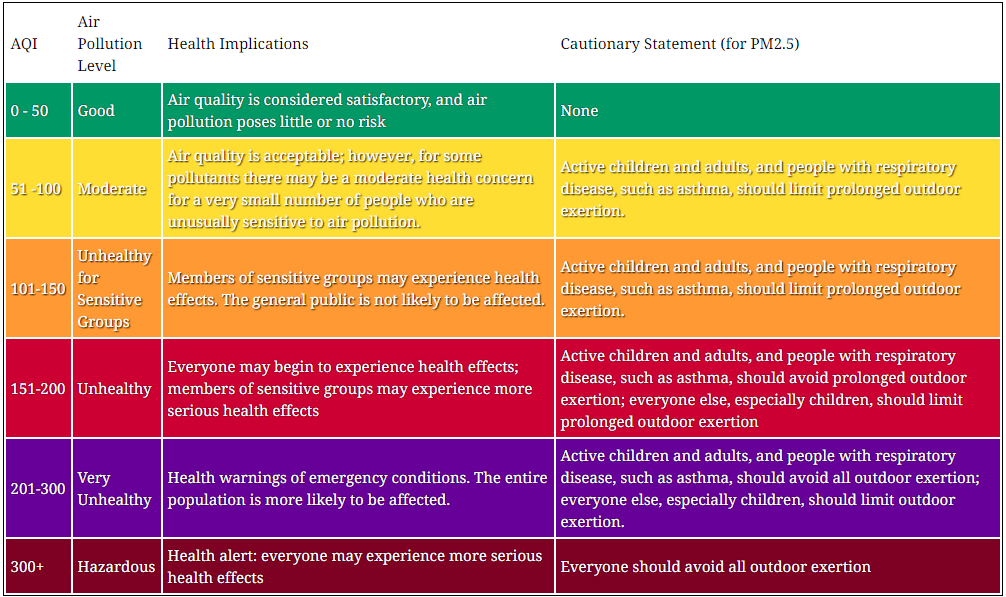

By David Evans
A recent study calculated that air pollution leads to 3.3 million premature deaths per year worldwide and this number may double by 2050. To put that in perspective, only heart disease (7.4 million) and stroke (6.7 million) cause more deaths per year.
Despite these figures, air pollution isn't top of mind when talking about our health. Unlike smoking a cigarette or eating fast food, it’s much harder to recognize when exposure to pollution is impacting our longevity. We see a plume of black smoke rise from an old truck to join the cloud of smog hovering around the skyline, but we don’t really know how it’s impacting our health on a day-to-day basis.
Fortunately, a group of scientists is out to help us visualize air quality on a global level and put it into terms we can easily understand.
The Beijing based group, Air Quality Index China (AQICN), gathers thousands of air-quality data points from over 70 countries and displays them in real time. They’ve released an interactive map that uses a simple color-coded system to provide a snapshot of air quality for locations around the world, quickly painting a picture of air quality.
The AQICN rating system of six different classifications ranges from Good to Hazardous, making it easy to recognize good and bad scores. Because this data is updated in real time, you can see what the air quality is near you right now … as long as you’re near a monitoring facility -- most of which are concentrated around big cities.
The data
The data behind this AQI map comes from air quality monitoring stations around the world, each represented by a colored pin. These stations measure particulate matter (PM) and relay their data to AQICN where it is standardized and incorporated into the map.Particulate matter consists of solid particles and liquid droplets which can include dust, dirt, soot or smoke. These particles are tiny -- the largest ones (PM10) are about 30 times smaller than the diameter of a human hair. Particles this small can get deep into your lungs and even into your bloodstream, which is what makes them such a high health concern. Most of the particles tracked measured in the World Air Quality Index are PM2.5.
Because there are varying methods and standards for quantifying air pollution in each country, AQICN uses one standard for all the data it receives: U.S. EPA Instant-Cast. The Instant-Cast is a standardized method used to convert raw pollutant readings measured in µg/m3 or ppb (parts per billion), to the much easier to interpret scale of 0 to 500. From here the index gives each of the six ranges a score and corresponding color which are reflected in the pins shown on the map.
Along with real-time air quality data, AQICN also provides a forecast of air quality up to eight days out. The group's forecast model incorporates weather data to predict the movement of air pollution.
This example provided by AQICN best explains the impact wind has on the air pollution of a city.
"South wind tends to increase the pollution in Beijing: If the wind is not strong enough (i.e. not ventilating enough), then the particules will get blocked by the mountains and will not be able to move further to the north, thus creating a dense particule concentration in Beijing."
"North wind tend to clear the pollution: When the wind blows sufficiently from the North, the air gets almost immediately cleared since there is no "pollution source" in the north (or, at least, much less than in the south)."
What real-time air quality data means for us
While AQICN’s display of air quality data around the world isn’t likely to change our day-to-day lives, it may impact a few of our plans and habits. A hazardous air-quality score for a particular region may sway our vacation plans slightly. I may opt to skip Beijing on my upcoming trip to China ... or maybe pick up a pollution mask -- some of which now come in a variety of colors and designs.More importantly, the power of visualizing data this way can be quite impactful because it opens up the results of science to everyone (in this case it's in real time). We are getting increasingly better about telling stories with data, and while we need to be careful about the motivations of some sources, it’s an amazing way to include the general public in the findings and resulting discussions.
The world AQI is a prime example of how data visualization has the power to take data and turn it into a story. Thousands of data points are turned into a map you can digest at first glance giving us a fast and easy way to see the impact air pollution has on our health. As we continue to collect environmental data and develop the ability to process and display it, the story of our global impact will be clearer and much harder to ignore.
Image credits: 1) WAQI 2) WAQI 3) EPA
David Evans is the founder of prch, a resource for responsible consumers. He is a UCLA graduate with a degree in Environmental Studies and Geographic Information Systems and works in the crossover between tech and conservation. David's mission is to help others improve their environmental and social impact.
China, U.S. to Sign Historic Climate Agreement on Friday
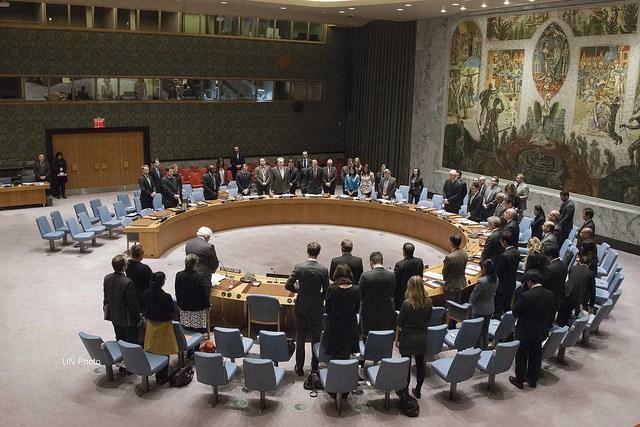

The Paris climate agreement has been described as one of the greatest diplomatic efforts of the past 30 years. But the road to the historic December 2015 conference, and the road following, have not been easy.
China, the world’s manufacturing powerhouse and its largest carbon emitter, was accused by many of trying to weaken the accords reached between 196 countries in Paris. Meanwhile, many politicians here in the U.S. have either dismissed or attacked the framework behind the Paris climate deal.
But despite the heated rhetoric, the commitment to COP21 is still lumbering along. One of the biggest steps post-Paris will happen this Friday, April 22, at the United Nations' headquarters in New York, where representatives from both China and the U.S. will sign the agreement, along with as many as 155 other countries, at an official ceremony.
Late last month, U.S. President Barack Obama and China's president Xi Jinping announced they would join an approximate 120 countries in New York for the signing ceremony. For many diplomats, NGO heads and business leaders, New York’s event will bring a sigh of relief. Nevertheless, much work needs to be done, as the Paris climate deal needs 55 nations that together comprise 55 percent of global greenhouse gas emissions to ratify the agreement before it can become enforceable.
Considering the polarization in Congress, it will be a tall order for the ratification of the COP21 agreement to get past the Senate. The Paris agreement, however, shows that President Obama is one of the boldest lame duck American presidents to date. Whatever one thinks about Obama, if Franklin Roosevelt’s first 100 days set the standard for how the first three months of a presidential administration are judged, then the 44th president’s final 24 months have set the bar high for how future heads of state will sunset into history.
Meanwhile most of the candidates vying to succeed Obama have, at the most, taken a dubious stance on climate-related issues. Ted Cruz’s career was built more on tackling Americans' behavior in the bedrooms; Donald Trump has argued that cold weather in itself refutes any theory of climate change; and Hillary Clinton has been accused of leading from behind on this issue, especially when it comes to the Keystone XL Pipeline. Only Bernie Sanders has spoken boldly about boosting investment in clean-energy technologies to stem the risks from climate change, and the Vermont senator has been arguably more forceful on this front than Obama.
But as the Washington Post pointed out last week, if enough countries sign the Paris climate deal, the U.S. will either have to toe the line or start a long diplomatic fight in order to wrestle out of it.
Watch for the momentum on COP21 to continue anyway, as the Republican candidates are far too focused on this summer’s convention in Cleveland to rail against the climate agreement. After all, the U.S. already demonstrated the financial commitment to a global fund to help developing countries enact climate adaptation and mitigation plans. And tiny Papua New Guinea, an Exhibit A for how poor countries will fare in the future if climate change risks are not addressed, was the first nation to ink the agreement.
With India also set to sign the deal this Friday, much of the heavy lifting on global action to confront climate change will be done, regardless of who takes the oath of office in Washington, D.C. on Jan. 20.
Image credit: United Nations/Flickr
H&M CEO Answers All The Tough Questions in Sustainability Report
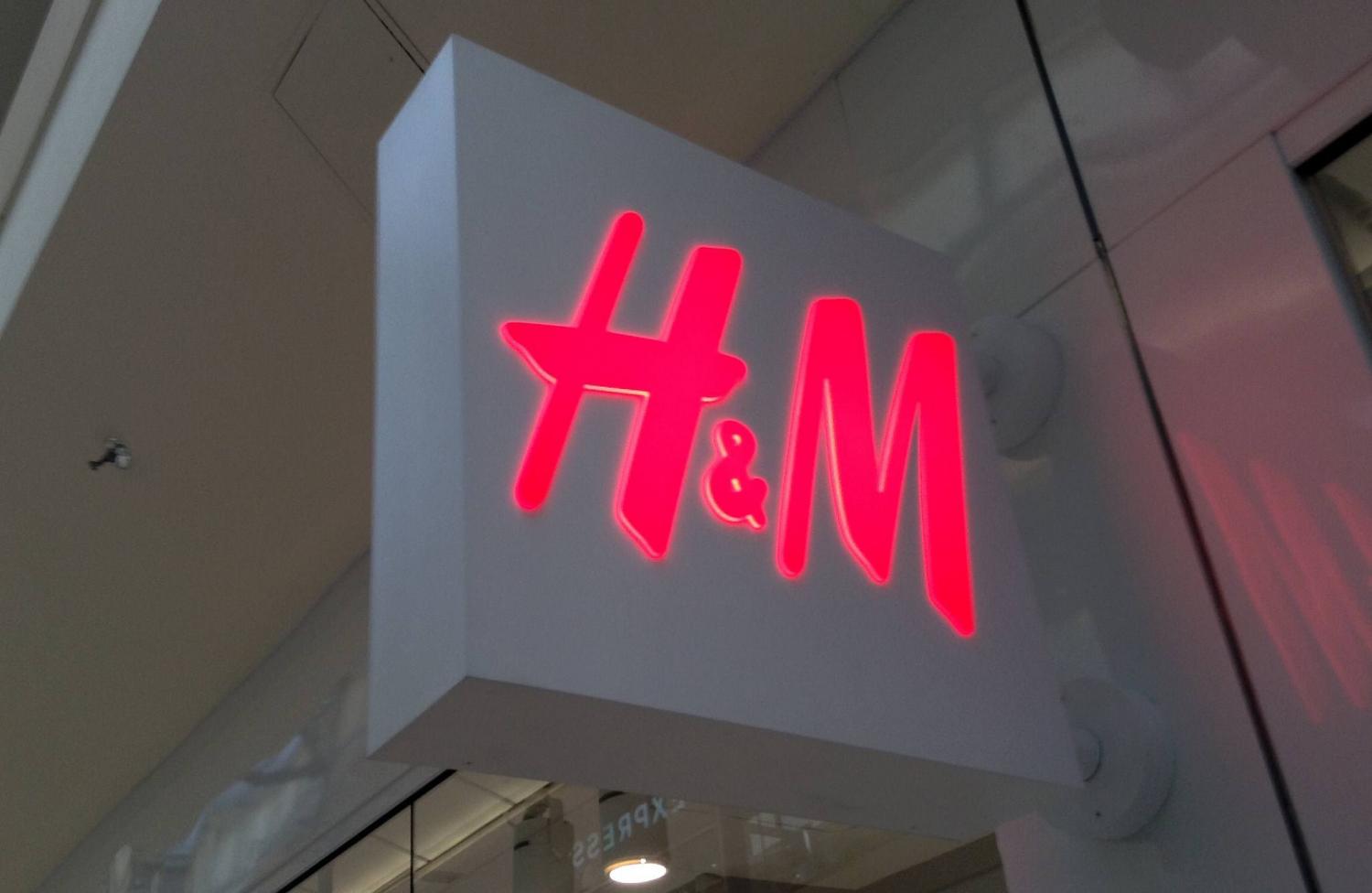

The future success of any company today, including H&M, depends on its long-term sustainability efforts and efficient, socially-responsible processes. In the company’s latest sustainability report, CEO Karl-Johan Persson offers insight into H&M’s progress in this area, including sourcing products from developing countries and the results achieved when it comes to the company’s Fair Living Wage strategy.
“I am really proud of what H&M has achieved and the positive impact we’re making,” Persson wrote in the report. “We are leading the way today within several sustainability areas and I want us to continue to raise the bar. I honestly feel we have come a long way. But, it is a very complex issue and we are certainly not at the end yet -- there is more to do, for us and the entire industry.”
H&M accomplished quite a bit in 2015. More than 12,000 tons of textile waste was collected in stores, and over 1.3 million pieces were made with closed-loop material, a 300 percent increase from the previous year. The use of renewable energy in all stores, offices and warehouses jumped from 27 percent to 78 percent, and CO2 admissions dropped drastically by 56 percent.
The company was named one of the 100 most sustainable global corporations of 2015 and one of the world’s most ethical companies. However, despite doing everything in its power to build a better, more sustainable and ethical brand, the company is still demonized for the role it plays in the fast fashion industry.
Many people are questioning whether or not fast fashion can really be sustainable and attacking the company for promoting consumption and unethical labor. But, in the spirit of transparency, H&M has done an incredible job addressing these concerns head on.
What do you think about buying clothes from developing countries?
When asked what he thinks about buying clothes from developing countries such as Bangladesh and Cambodia, Persson had this to say:
“Buying products made in developing countries is the most effective way to lift people out of poverty and give them opportunities for a decent life. I would say it is extremely important that developing countries have access to international markets -- how else can they make progress? H&M indirectly creates employment for over a million people, mostly women, in the countries that manufacture our products.”“But obviously, we cannot just lean back and be content with the fact that many jobs are being created. With our size and global presence, we are working to ensure that these jobs are good jobs and that the way we do business makes places better.”
H&M is an incredibly large company with stores and suppliers in over 61 markets around the world. The company admits to having an impact on these communities, both good and bad, without a doubt. However, the brand is working to embrace the positive impacts and reduce the negative ones throughout the entire value chain.
What kind of results have you achieved with your Fair Living Wage strategy?
“Wages are a very complex issue,” Persson explained. “That is why we seek guidance from wage experts such as global trade unions, the ILO and the Fair Wage Network.” He went on to explain that the role of a brand or buyer is not to set the level of wages, but rather wages should be negotiated between the parties of the labor market.
It is not the role of H&M or any foreign company to determine wage levels in any country, Persson attests. In addition to this, the company shares suppliers with many other brands, which makes collaboration even more important for dealing with this challenge. It is a shared responsibility.
“We believe that everyone working in the textile industry, no matter what brand they are producing for, should earn a fair living wage,” Persson said. “For H&M, this is indisputable and the reason why we have developed a global fair living wage strategy that I am really proud of.”
This strategy involves not only buyers but also suppliers, textile workers and national governments. H&M also collaborates with trade unions and NGOs to contribute to the change happening throughout the industry.
An important part of the company's Fair Living Wage strategy is the Fair Wage Method, which was developed by the independent Fair Wage Network. It focuses on establishing good pay structures as well as strengthening the ability of workers to regularly negotiate wages fairly. The company has set the ambitious goal to increase wages for at least 60 percent of the garment workers in its supply chain by 2018.
What is your view on consumption?
“Consumption is necessary for jobs, generating taxes that pay for schools, hospitals and infrastructure, but also for developing countries to become part of international trade and lift themselves out of poverty,” Persson said. “If people stopped consuming, society would be affected negatively. H&M wants to continue growing responsibly. Our growth must always be balanced by sustainable practices.”
He went on to explain that, like many other industries, fashion is too dependent on natural resources, "therefore we have to change the way that fashion is made." This is why H&M is so committed to its mission to reuse garments and close the loop on textiles. By collecting old clothes and turning them into new, updated styles instead of letting them go to waste, the company is taking an important step toward a circular economy.
What are the main sustainability challenges for H&M and the fashion industry as a whole?
“It’s all about closing the loop by reusing textile fibers, suppliers paying their employees a fair living wage, and the ambition to increase transparency so customers can make informed choices,” Persson said.
The company has taken several important steps toward a more transparent fashion industry. From working with the U.N. to report on human rights-related work, to developing a consumer labeling system that allows customers to compare products’ sustainability performance.
However, “you can only drive real change if you have a collaborative mindset,” Persson said. “This is why we want to cooperate within the industry as well as across industry borders. This is why we treasure our dialogue with innovators and experts that help us develop new ideas. This is why we are so proud of our ongoing cooperation with stakeholders. All of this makes it possible for us to set even more ambitious sustainability goals and that we hope will lead the way to a sustainable fashion future.”
Image credits: 1) H&M 2) Flickr/Mike Mozart
The News That Never Was: Goldman Sachs' $5 Billion Mortgage Fraud Settlement
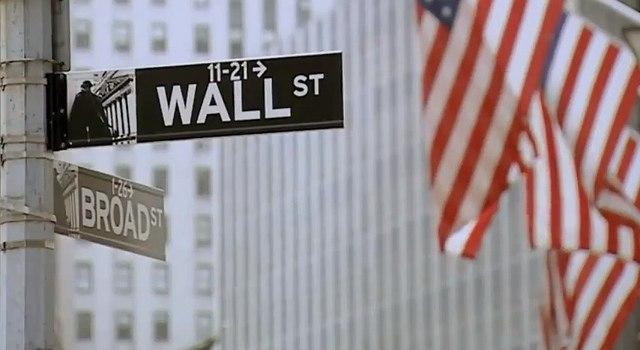

Goldman Sachs, which just agreed to pay billions in penalties for its role in the 2008 housing crash, likely won't see too many reverberations on the stock exchange this month. It also won't face a plethora of questions from angry investors. That's because a substantial portion of the $5.1 billion in penalties that the feds say they've won on behalf of investors, taxpayers and homeowners won't really hit the banking giant's bottom line. It's only on paper.
"Buried in the fine print [of the agreement] are provisions that allow Goldman to pay hundreds of millions of dollars less — perhaps as much as $1 billion less — than that headline figure," writes Nathaniel Popper of the New York Times.
The 147-year-old company, which reported more than $8 billion in profits and $856 billion in assets in May 2015, stands accused of duping investors with risky mortgages just prior to the collapse of the housing bubble in 2008, and then betting on whether the housing market would take a sharp dive (which it did). In the eyes of critics like former California state treasurer, Phil Angelides, its actions should have earned the investment firm state and federal penalties as stupendous as its crimes.
Instead, by participating in a number of government programs and applying for tax credits, the company will end up saving money on what it will owe. And the agreement comes with a handy chart to help financial executives figure out just how much they will really pay.
But what is most concerning, Angelides says, is something that isn't factored into the agreement -- or the chart.
"[What’s] most troubling is that this settlement agreement – like previous deals between the Justice Department and big financial institutions – contains no consequences for the executives who drove or condoned wrongdoing," Angelides wrote in an op/ed for the Fresno Bee newspaper.
Consequence. That thing we must individually deal with when we miss a loan payment or come up short on our mortgage, Angelides says, doesn't apply to those who managed or oversaw the handling of the investment accounts at the time, because they aren't named individually in the investigation. The crime therefore isn't attached to their employment record and likely won't impact their reputation years after it happened.
As for Goldman Sachs' reputation, the stock market last Monday pretty much said it all.
"Goldman Sachs’ stock closed up the day the settlement was announced," Angelides noted.
Which might explain why the Internet also seems to have suffered a strange case of short-time memory loss. What truly sums up the social significance of an ethics controversy, I often find, is what is left in Google's search results when a debacle is over. Do news agencies continue to stoke debate over the issue with weeks of controversial postings on the topic? Does it become a Trump-versus-Clinton front pager for weeks on end? Do public officials chime in to condemn the agreement? Or do the allegations simply become smaller and smaller a few days later, replaced by more controversial news?
"Everyone Knows Why Hillary Clinton Won't Release Her Goldman Sachs Speeches," was this morning's top result in a Google News search for Goldman Sachs. It was followed by a more reflective topic, "Goldman's Blankfein Demands Deepest Cost Cuts in Years" and my favorite but less-significant lead: "Panama Papers: Kremlin Apologizes for Putin's Goldman Sachs Gaffe."
The Goldman Sachs case is the latest in a string of big-bank settlements from the housing crisis. Investigators, having done their job to bring prosecution to the public's attention, can now afford to let the topic die. Will the victims who lost their homes and investments in the housing crisis, however, feel that justice has been served with a settlement that measures penalty by the size of a negotiated tax and credit break? I'm willing to bet not.